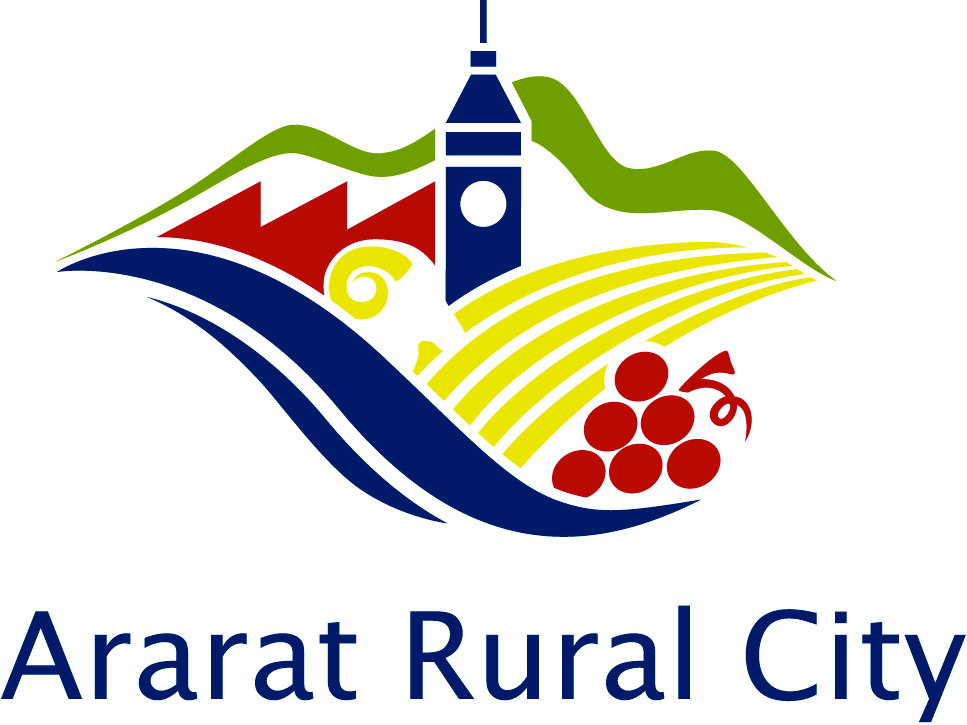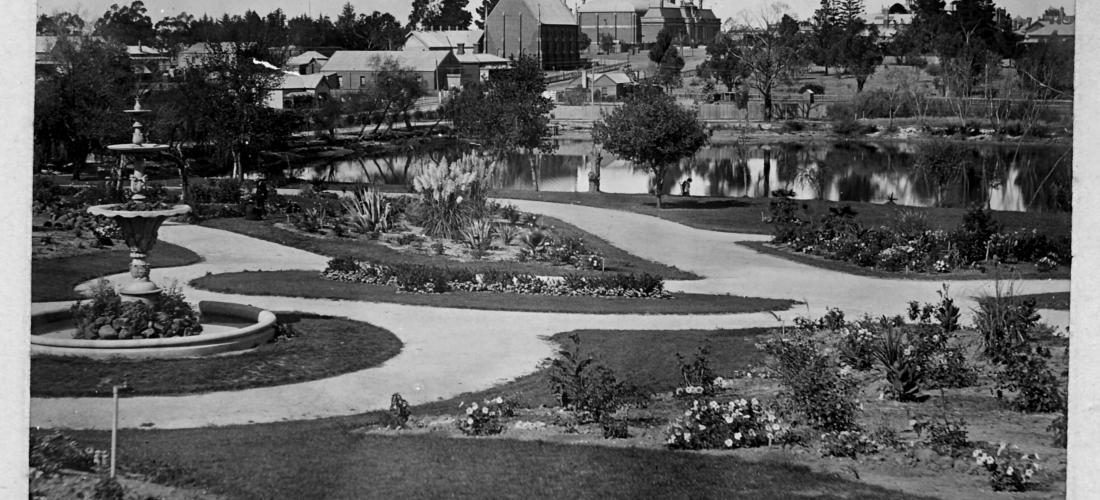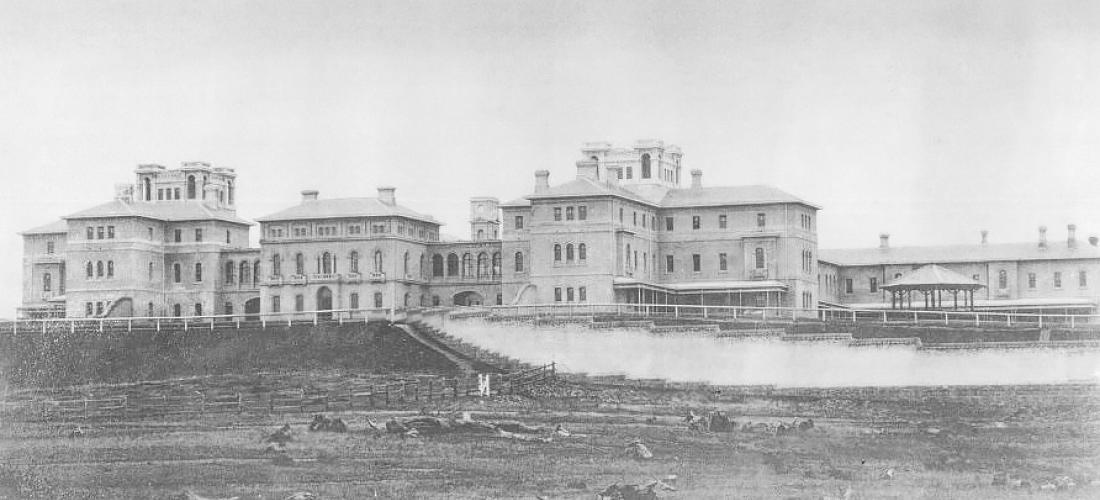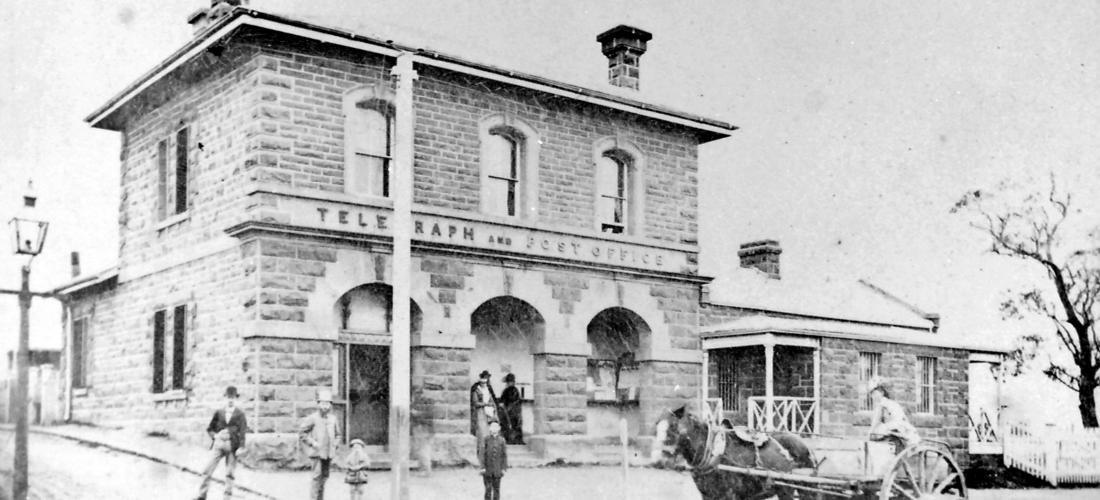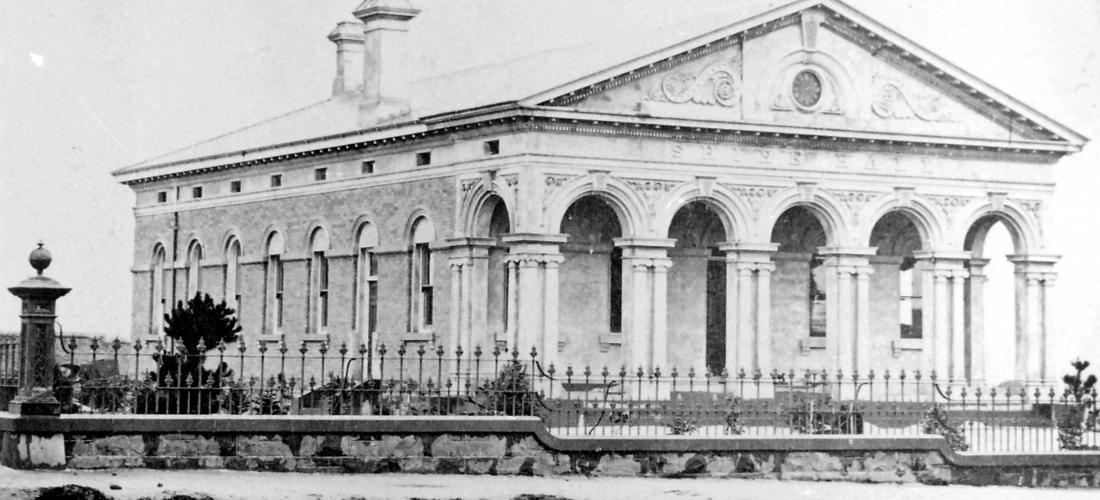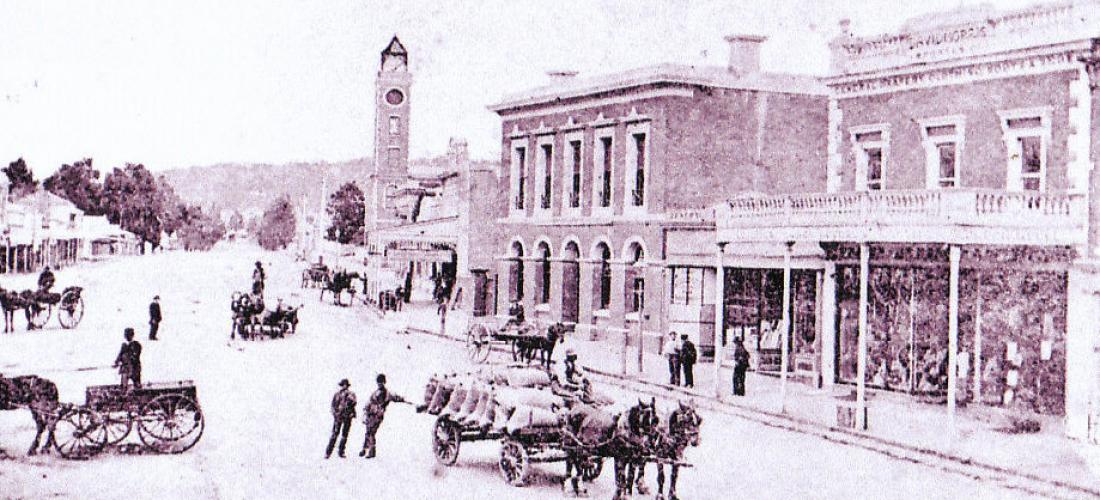In the years that followed, a slow but certain movement of people from the farm to urban communities was witnessed, along with improvements in farming methods and equipment, dramatic advances in transport and communications and an expanding range of services to the community.
The migration of people off the farm to the urban or semi urban areas, largely due to financial pressures, has been a major factor in changes within the rural communities with the closure of schools, the difficulties of maintaining local facilities and activities and the delivery of services.
HM Prison Ararat was built just outside of the town in 1967 and was later named Hopkins Correctional Centre following a redevelopment in October 2015.
The progress and development of Ararat between 1857-1867 have had no parallel in any decade since.
Take a look at Ararat in 1867: Where ten years earlier there was nothing but the bush, now lay a town with broad streets and a market square, Town Hall, country goal (J Ward), a large mental asylum (Aradale) and other Government Officials.
Substantial wood or brick building have replaced the flimsy structures of canvas and wood that formerly lined Barkly Street, Botanical gardens were laid out and fenced.
Hospital, Mechanics’ Institute, four churches and a common school were built, along with the establishment of a fire brigade, band, agricultural society, and cricket and race clubs. The newspaper ‘The Ararat Advertiser’ was established in 1857 and by the late 1860s was published twice a week.
Mining had waned by 1867, however the stability of the town was permanently ensured by the settlement of an agricultural population on the large areas of the surrounding sheep runs during the 1860s.
Construction of the Aradale Mental Hospital began in 1864. Originally known as Ararat Lunatic Asylum, Aradale and its two sister asylums at Kew and Beechworth were commissioned to accommodate the growing number of 'lunatics' in the colony of Victoria. It officially opened in 1867 and operated for 131 years before being closed as an asylum in 1998.
J Ward started its life as a goldfields prison in 1859. When mining began to run low in the mid-1880s the prison buildings were acquired by the Lunacy Department as a temporary housing for the criminally insane. In December 1886 the County Gaol became J Ward of the Ararat Lunatic Asylum where the most depraved and most dangerous men in Victoria were housed in horrific conditions under the highest security.
The Ward was closed in 1991. J Ward is now a museum complex within the original prison structure dedicated to recording and preserving the history of the criminals
In 1870 the population numbered in Ararat was about 2300.
The opening of the railway to Ararat on April 6, 1875, the building of a new State School in Moore Street, the Shire Hall and two banks, along with the construction of a reservoir at Langi Ghiran for the reticulation of water to the town were the outstanding events in the next 10 years.
Gas lighting was introduced in 1887 and was the power source for 26 years before electric lighting was turned on in 1913 through the enterprise of Cr James Irwin.
In 1918 the town gained a new industry, a butter factory. The making of Alexandra Sports Ground, improvements to the gardens on the Civic Square and Alexandra Park and development of other sporting facilities helped Ararat win first prize in the coveted ‘Ideal Town’ contest in 1931.
A big step forward was made in 1938-39 when Ararat adopted a water borne sewerage scheme (completed in 1940), municipal abattoirs were erected, the Town Hall was enlarged and improvements made to the water supply.
The discovery of gold 14 years later completely changed the scene.
A group of prospectors from Avoca found gold at Pinkey Point on Burrumpbeep run in May 1854, but the rush that followed soon faded out.
The discovery of the Blackman’s Lead a year later was the real beginning of the Mount Ararat rush. Other rich leads in the vicinity of Cathcart were quickly opened up towards the end of the 1865. Miners were successful in getting gold on Bridal Hill, Deep Lead and nearby gullies on the eastern side of the range which divides Ararat from Cathcart. A small settlement of miners’ tent and stores started to appear.
In April 1857, a group of 700 Chinese miners on their way to the Clunes goldfields in central Victoria, found gold at the current site of Ararat. News that some Chinese had struck a rich vein of gold on the Canton Lead reached Cathcart one morning in May 1857. The excitement was intense, and as the news spread farther afield miners, storekeepers and shanty owners flocked to Ararat.
In a few weeks 20,000 people were living under canvas, and each week their numbers increased. It has been claimed that at the height of the rush, there were more than 40,000 on the Ararat goldfield.
Theatres, dancing rooms, gambling saloons and hotels sprang up rapidly, and far into the night the sounds of music and revelry were heard.
Though the rowdy element received a large share of the limelight, there were in Ararat in 1857 capable and responsible businessmen and government officials who soon set about establishing law and order.
The traditional owners of the land upon which the majority of the municipality now sits were the Djab Wurrung (literally meaning ‘soft language’) people.
Theirs was a rich culture comprising some 40 clans, or around 4,000 individuals. In season, eels were a staple food for the Djab Wurrung and in autumn neighbouring clans moved to the fishing grounds at Lake Bolac where up to 1,000 people gathered to take advantage of the annual eel migration.
A Mining Board was appointed in March 1858. The sale of the township allotments took place in June and July, and shortly afterwards the Improvement Committee sent a petition to Melbourne for the establishment of municipal government.
The City of Ararat was declared a municipality on September 20, 1858 and was first incorporated as a borough on September, 24 1858 – known as the Municipal District of Ararat, headed by chairmen. In 1862 it was declared and known as the Borough of Ararat, headed by mayors.
Ararat’s outlying district was first incorporated as a road district on August 27 1861, and became the Shire of Ararat on March 8, 1864.
On September 23, 1994 amalgamation was achieved when the Shire of Ararat was abolished, and, along with the City of Ararat and parts of the Shire of Stawell, was merged into the newly created Ararat Rural City.
As 1899 drew to a close, volunteers from Ararat were leaving for South Africa to serve in the Boer War.
The outbreak of war in 1914 halted for the time being the long march of progress. More than 600 men from Ararat and district, including 147 in the borough, volunteered for service in World War I.
The resources of the town and the energy of its people were directed to other avenues once again when World War II commenced in 1939. Nearly 1500 men and women from the town and shire joined the forces, and work for the Red Cross.
Before the war ended a weaving mill was established at Ararat by Prestige Fabrics Limited and the company afterwards built a large, modern factory on a site made available in Queen Street.
Approximately 700 new homes were built in Ararat by the Housing Commission and private enterprise in the post war period and the population of Ararat increased to 7420.
In October 1950 the Governor, Sir Dallas Brooks came to Ararat.
The first white people arrived in Djab Wurrung country in 1836 when Major Thomas L. Mitchell’s exploratory party moved through the area.
Major Mitchell, who made a journey through western Victoria in the winter of 1836, was the first white man to see the Ararat district and to leave a record of his visit.
He named the Grampians, Mount William, the Pyrenees mountains, Mount Cole, Mount Abrupt and the Hopkins River.
The publication of his glowing report of “a land fit for immediate colonisation” caught the attention of the New South Wales sheep owners and soon the flocks began to move down the Major’s Line.
After a journey of three months, one of those pioneering stockmen – Horatio Spencer Wills, along with his wife and children, and his sheep and cattle – ‘squatted’ in the country south-west of Ararat.
He named the outstanding hill on his run ‘Mount Ararat’ because like the Arc, he rested there.
